Insights >
The four video creation principles for search lift in Japan


New: Japanese Consumer Behaviour – 2025 report | download for FREE >>


Have you ever heard of search lift? Search lift is a metric that measures how many searches for your target keywords are increasing as a result of your advertising.
Yahoo! JAPAN has been offering a search lift product since February 2019, therefore, we’re able to provide a lot of insight on the subject. Consequently, Yahoo! JAPAN has put together a list called “The Four Principles for Search Lift” which will help online advertisers when creating a video for an ad. As we mentioned in a previous post about 2020’s top digital trends in Japan, video content is booming and we highly recommend creating a video ad to increase user engagement.
There are three steps you need to take in order to change user behaviour through ads.
Table of Contents

1. Get users to see the ad
2. Get users to remember your keywords
3. Remind them of search behaviour
There are some key points to keep in mind at each step.
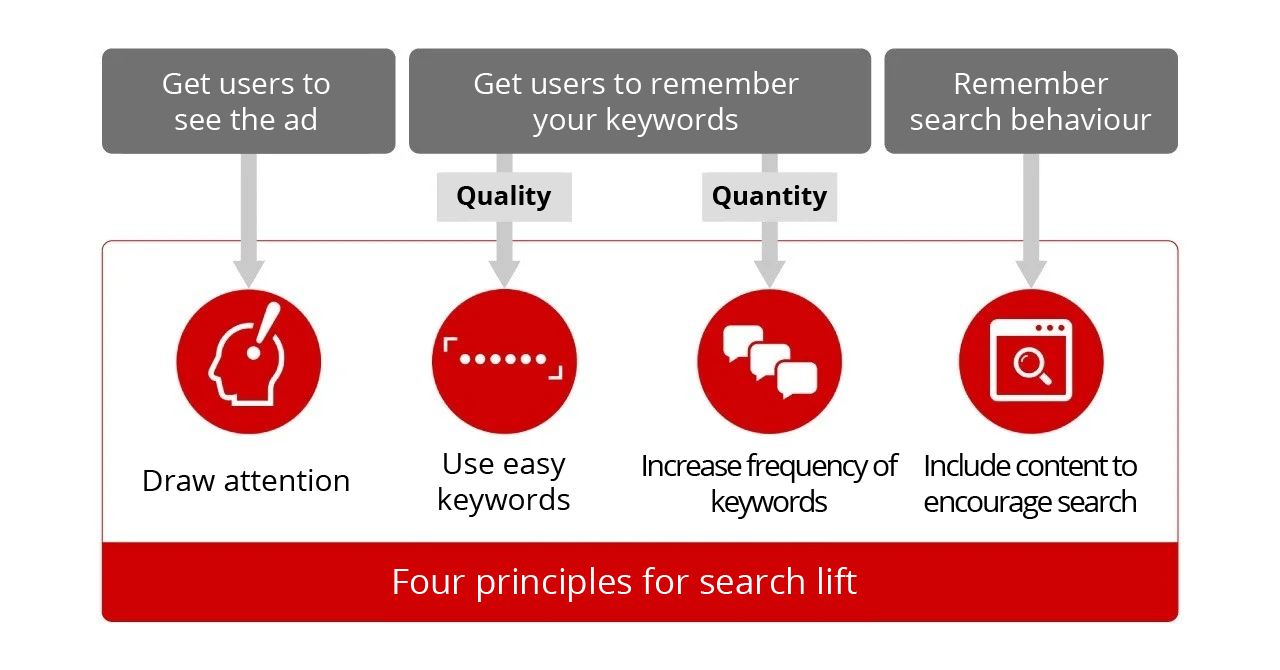
With these principles in mind, how can you reflect these points in your creative?
In order for your ads to alter search behaviour, you need to get users to watch the video first. No matter how well your ads are structured, if the user doesn’t watch the video ad, there is no point in advertising.
The best way to get users to pay attention to your ad is to gain their interest. We recommend using creative that is instantly recognisable and appealing to the user; therefore drawing their attention.
Displaying the name of the campaign at the beginning of the video, which clearly shows the product benefits, can help to attract users.
e.g. Find a Room – Spring Campaign [Commission Free]
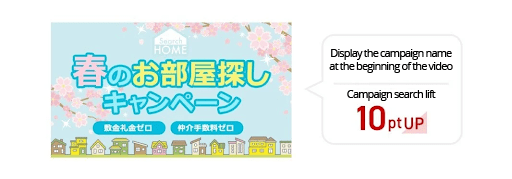
When comparing the average campaign search lift results for ads with and without a campaign name at the beginning of the video, there was a 10-point difference1.
To draw attention, you can also include other catchy visual elements to create a search lift effect, such as the following:
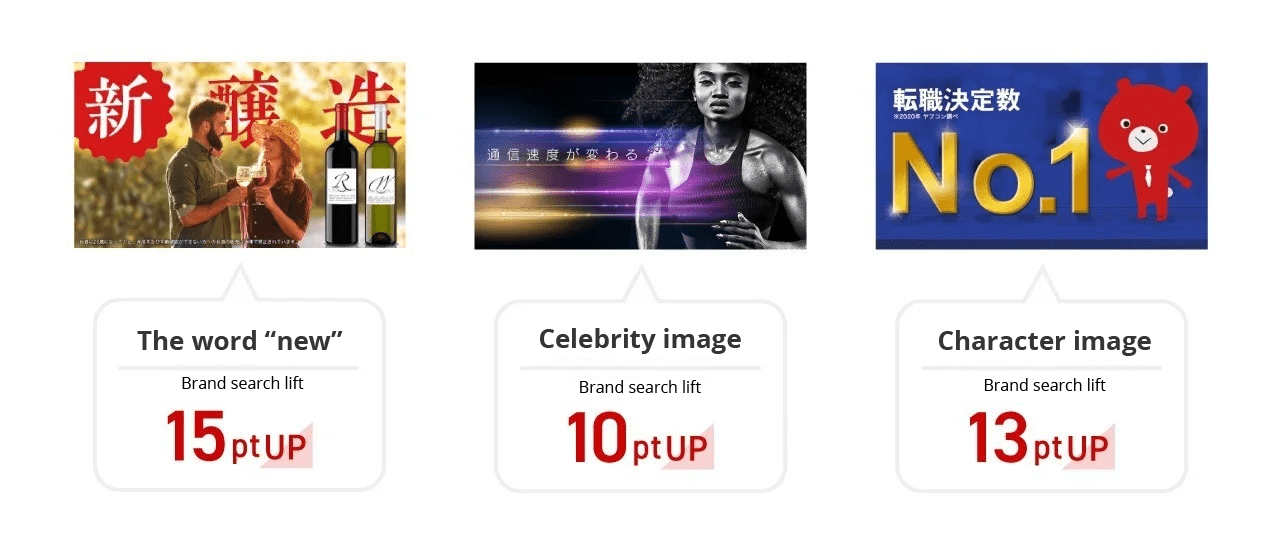
Have you ever felt stumped for which keywords to type when searching for a product you would like to look up? You may remember the visuals of a product, but you are not sure which words to input?
Web searches use text. Therefore, make sure the keywords you want users to search for are straightforward and easy to remember.
Exactly what length of words are easiest to remember?
Here are the average search lift results by the number of characters in a keyword.
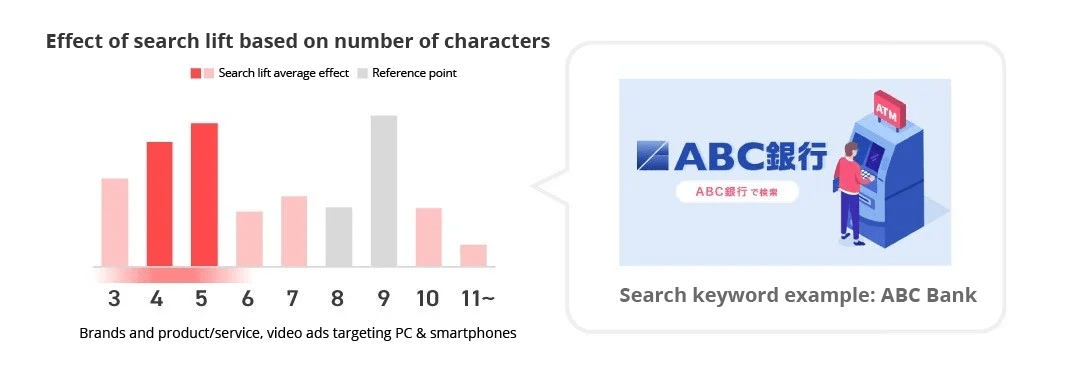
The graph shows that the best performing keywords for “brand” and “product/service” are those with 4 or 5 characters.
Keywords with more than 8 characters have a lower score. Longer brand names and product/service names don’t seem to get as many searches.
Brand names and product/service names tend to be unique nouns and users find them more difficult to remember or input than ordinary words. The results here show that it is easier to be found with as few characters as possible.
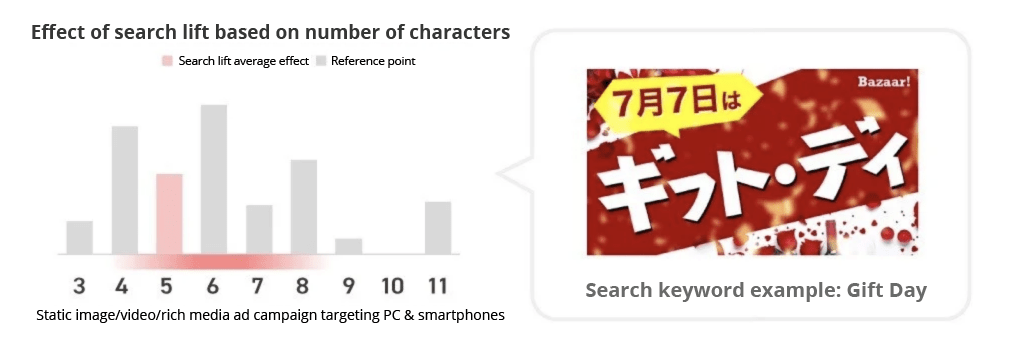
On the other hand, the trend is a little different for the number of “campaign name” characters.
This is just for reference because of the small number of projects surveyed, but campaign names with 4-8 characters have the most search volume.
Campaign names are words that are strung together with meaningful words, so even longer keywords are searched for compared to “brand” and “product/service”. However, keywords with a large number of characters ranked lower in the “campaign” results, so it is preferable to limit the length of the keyword to about 8 characters.
Exactly which length of words are easiest to remember?
You can also look at setting up keywords in your ad creative. For product or service names that are long, you may consider using abbreviations.
Even straightforward keywords will not be remembered or noticed by the user once they are seen. That’s why the key to making the creative is to repeat the message.
Make an impression of your keywords to your users by repeating them throughout a single video.
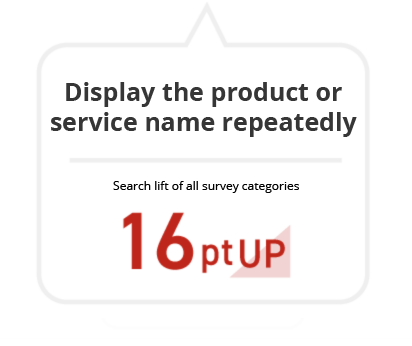
The keyword in this video is “カナダ便 (Flight to Canada)”. By displaying keywords in multiple places (such as in the tagline at the beginning, in the product introduction, and in the search window that appears in the last cut, as shown in the sample video above), its search lift results were 16 points higher than displaying the keyword just once in a video1.
It’s also effective to use the same material that was used in other media (such as TV commercials, magazines, etc.), with the same message and impression.
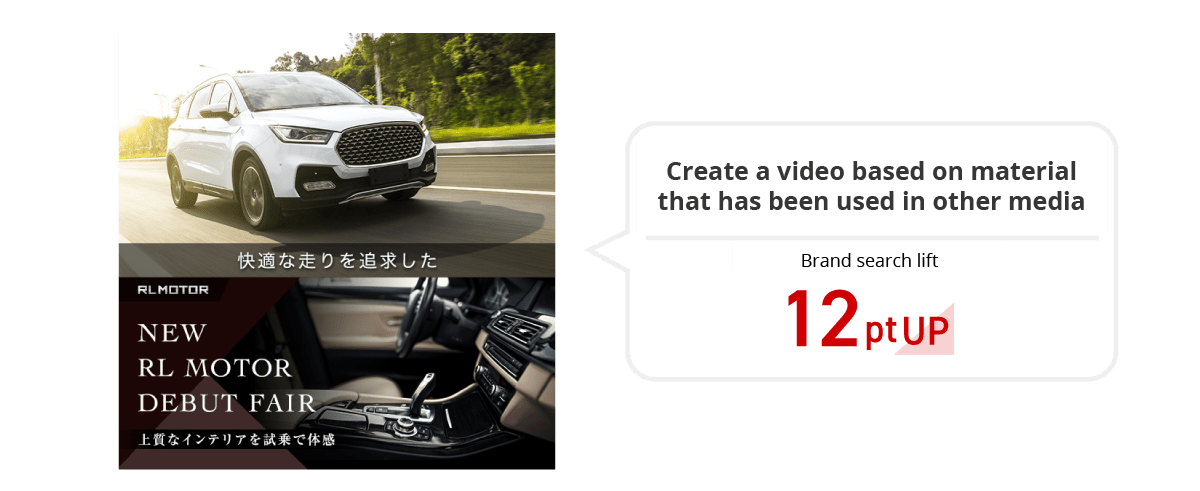
When you see an ad, even if you are interested in the content, you will most likely not search for the product or service. In order to encourage users to take the next step, you can nudge them in the right direction to take the desired search behaviour after they see the ad.
Add the search box to the video and let them imagine what words they could use to search.


Just adding an image of the search box to the video can be effective. However, adding animation, such as letters being typed, will make the keyword more memorable.
In this article, we introduced The Four Video Creation Principles for Search Lift, originally written in Japanese on Yahoo! JAPAN’s blog: part 1 and part 2.
These principles may seem obvious to professional ad creators, but we hope the survey results act as evidence to support your theories. Last but not least, if you are unsure of how many letters your brand or product name is in Japanese, or which keywords you should use in your ad creative, feel free to contact us bilingual Japanese online marketers for assistance.
1Yahoo! JAPAN’s own research calculated from the difference between the presence and absence of survey items.(June 2020)